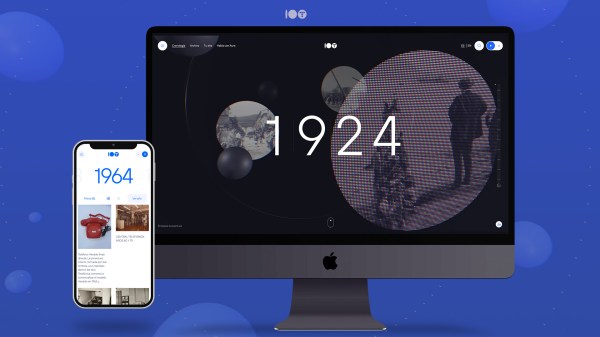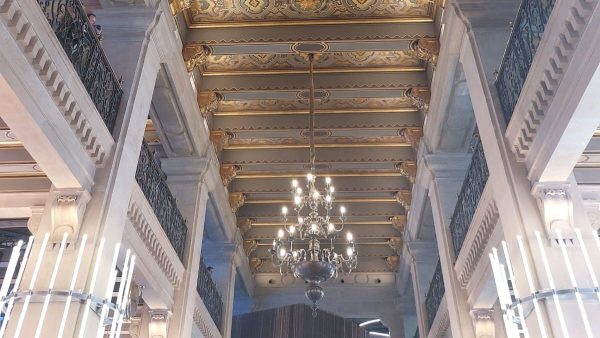In the 1960s, the space race reached the most historic milestones: in 1961 and 1963, the Soviets Yuri Gagarin and Valentina Tereshkova became the first man and woman to travel into space. In 1965 their compatriot Aleksei Leonov became the first human to take a space walk and a year later, the Soviet Venera 3 became the first space probe to land on another planet, Venus.
The decade would culminate with the arrival on the moon aboard Apollo 11 of the Americans Neil Armstrong, Michael Collins and Buzz Aldrin, and in which Telefónica had something to do with, as we will explain later.
In addition, the 60s were marked by the emergence of the hippy movement and the enormous popularity that made The Beatles into something much bigger than just a music group.
In the scientific and technological sphere, it is worth mentioning that in 1967 the first heart transplant in history was carried out and in 1969 the ARPANET, the precursor of the Internet, was born.
1960: employee earrings
In addition to of the Institución Telefónica de Previsión and the collective insurance, the company had a new housing a new-build housing scheme for those who needed it most: Telefónica delivered in 1960 up to 137 new-build apartments In 1960, Telefónica delivered up to 137 new-build flats and financially assisted almost 300 other financially assisted almost 300 other employees in acquiring a house.
1961: the Heraldo
The Heraldo telephone, along with the Góndola, which we will see later, introduced colour in telephony by being manufactured in white, green, blue, red and grey.
This popular model in Spanish homes underwent modifications with the wall-mounted varieties the wall-mounted varieties, with push-button panel or with accessories such as the bell.
1962: Pentaconta
The great milestone of this year was the inauguration of the Pentaconta exchanges, which, with a crossbar switching system, brought great speed in the establishment of communications and intensified the national automatic interurban service.
With an “extraordinarily satisfactory” result, it was adopted in all new automatic installations in Spain. The first Pentaconta 1000 exchange was inaugurated in the Barcelona town of Igualada, with 2,000 lines.
1963: first booths in Madrid and Barcelona
Although they would become popular three years later, the streets of Madrid and Barcelona began to have their first booths: they worked with tokens and only for urban calls.
Moreover, in 1963, the record number of telephones installed in a year was broken, 186,152 to be precise.
And although it had been marketed since 1961, as we have seen above, in 1963 it centralised production in Malaga of the Heraldo telephone, which helped it to become more popular.
1964: new record number of lines installed
If in 1963 the record number of registrations was broken, in 1964 the ceiling for new lines was broken once again: 240,000 were installed that year. At the same time, however, the number of lines still to be installed increased to 430,000.
One consequence of this growing number of lines was that the six-digit numbering system had to continue to expand. In February of this year, Seville was added to this category, in which all numbers began with 2.
1965: new president
After 20 years of presidency, José Navarro Reverter was replaced by Antonio Barrera de Irimo.
In addition, in 1965, the submarine cable PENCAN-1 came into operation, which was 1390 kilometres long and connected Cadiz and Santa Cruz de Tenerife. Its characteristics (45 repeaters and 160 channels at 3 kHz) made it for a time the highest capacity submarine cable in the world.
1966: cabins arrived on the streets
As we explained in the article dedicated to the 1920s, in 1928 the first public telephone was installed in the Retiro de Madrid. But it was not until 1966 that the first booths (already visible since 1963 in some cities) were installed on a massive scale: at first more protected with their own booth and later with a support and two half walls.
Until the popularisation of mobile phones, there were more than sixty thousand booths, for decades an essential element of the landscape of our towns and cities.
1967: Matilde!
The successful advertising campaign for the share issue, popularised by the actor José Luis López Vázquez (who still had five years to go before entering the booth…), reached such a level of popularity that the company’s shares became known as ‘matildes’, as that was the name of his wife in the advert.
That same year, a satellite earth station was installed in the Madrid municipality of Buitrago de Lozoya under a contract signed with NASA. Its name was Buitrago I, it used INTELSAT satellites over the Atlantic Ocean and carried telephone, telegraph and television traffic with the American continent.
1968: Gondolas and answering machines
In the late 1960s, the Gondola became popular, a very “pop” telephone with a rounded shape, long cord and often red or cream-coloured. Smaller and more compact than the previous ones, it had the revolution of incorporating the dial – the “screw” for dialling – in the handset.
The first answering machines also arrived at this time. By means of a tape system, and after the beep, the caller could leave a message for the owner of the line to listen to on his return. The Centinela model was marketed together with the Góndola and was a real revolution both in homes and offices.
1969: from Buitrago to the Moon
As our centenary website reminds us, Telefónica helped in the arrival of man on the moon:
“The Telefónica ground station in Buitrago de Lozoya (Madrid) was soon connected to the NASA tracking station in Robledo de Chavela. This NASA “branch” in Spain was one of 20 worldwide, but as fate would have it, during the Apollo XI mission in the summer of 1969, only three of them – Robledo de Chavela, Goldstone in California and Canberra in Australia – were able to maintain constant communication with the spacecraft despite the Earth’s movement. All three formed a satellite network with NASA’s antennas in Washington and from there, with the space centre in Houston.
As also stated on the website, “certain technical setbacks had to be overcome that almost jeopardised the mission, but in the end, Telefónica’s engineers – and the American teams involved – achieved the optimum connections to facilitate the mission, and not only that: also the possibility of broadcasting on television the historic images of the small step for the most famous man in history”.
1960s images
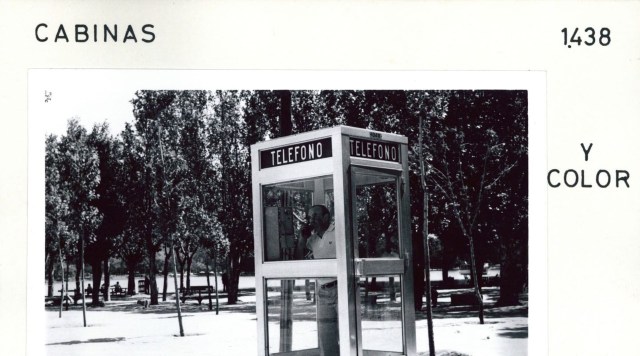

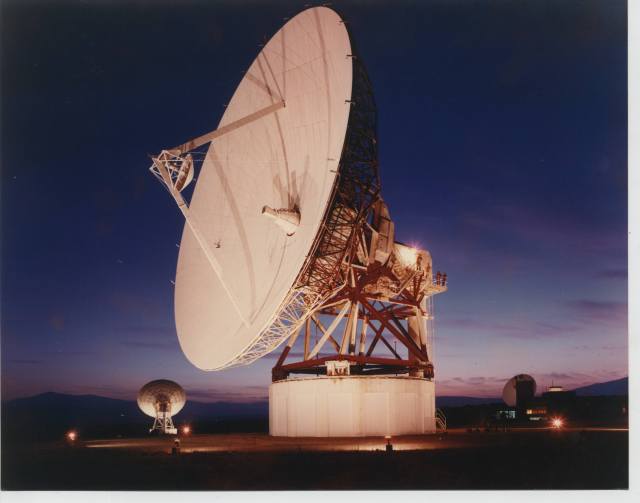
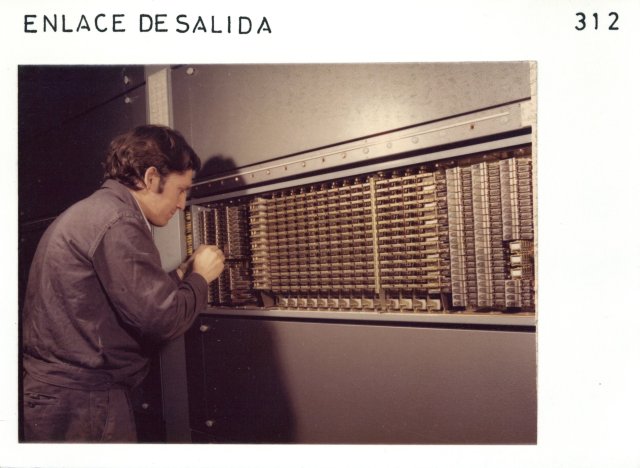



Telefónica Centenary
Don’t miss https://www.telefonica100.com, our website with year-by-year information on the highlights of our centenary history.
If you want, you can also take a closer look (the 20s, 30s, 40s and 50s are already available) in the series by decades that we are publishing on our blog.







